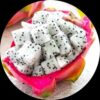- Empty cart.
- Continue Shopping
Cashew
₹210.00Current price is: ₹210.00. Original price was: ₹390.00.
Genus : Anacardium
“Introducing our Cheap Cashew Fruit Plant, a budget-friendly option for growing your own cashew fruits. Experience the delight of harvesting fresh cashew fruits from your own garden and savor their delicious flavor. Don’t miss out on this affordable opportunity to add a tropical touch to your home garden!”
Add to cart
The cashew plant, also known as Anacardium occidentale, is a tropical evergreen tree native to Brazil but now widely grown in many parts of the world, including India, Vietnam, and Nigeria. The tree can grow up to 12-14 meters tall and has a broad, spreading crown with a diameter of up to 25 meters.
The cashew plant produces a fruit called the cashew apple, which is pear-shaped and has a yellow or red color. The cashew apple is not actually a true fruit, but rather an accessory fruit that grows at the base of the cashew nut. The cashew apple is high in vitamin C and has a sweet, juicy taste.
The cashew nut is the seed of the cashew plant and is found at the bottom of the cashew apple. The nut is surrounded by a hard, shell-like structure called the cashew shell, which contains a toxic substance called anacardic acid. To remove the cashew nut from the shell, it is first roasted or steamed, and then the shell is cracked open.
Cashew nuts are a popular snack and are used in many cuisines around the world, especially in Asian and Middle Eastern dishes. They are also used to make cashew butter, cashew milk, and cashew cheese. Cashews are a good source of protein, healthy fats, and vitamins and minerals such as copper, magnesium, and phosphorus.
In addition to their culinary uses, cashew plants have also been used in traditional medicine to treat a variety of ailments such as toothaches, snake bites, and skin rashes. Cashew nut shell extract is also used in the production of paints, varnishes, and insecticides.
Add a review
Currently, we are not accepting new reviews













Reviews
There are no reviews yet